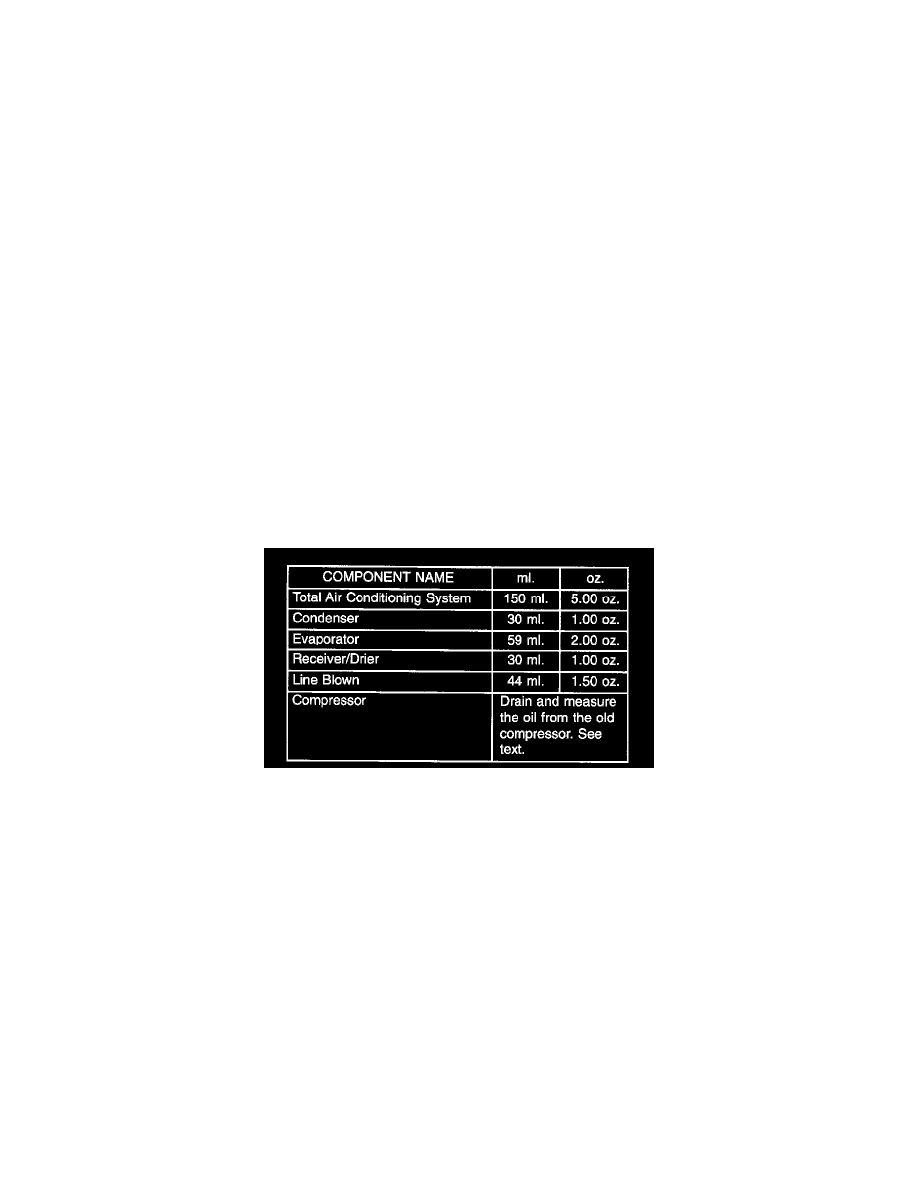Concorde V6-2.7L VIN V (2001)

Refrigerant Oil: Service and Repair
REFRIGERANT OIL
The refrigerant oil used in R-134a refrigerant systems is a synthetic-based, PolyAlkylene Glycol (PAG), wax-free lubricant. Mineral-based R-12
refrigerant oils are not compatible with PAG oils, and should never be introduced to an R-134a refrigerant system.
There are different PAG oils available, and each contains a different additive package. The 1OPA17 compressor used in this vehicle is designed to
use an ND8 PAG refrigerant oil. Use only refrigerant oil of this same type to service the refrigerant system.
After performing any refrigerant recovery or recycling operation, always replenish the refrigerant system with the same amount of the
recommended refrigerant oil as was removed. Too little refrigerant oil can cause compressor damage, and too much can reduce air conditioning
system performance.
PAG refrigerant oil is much more hygroscopic than mineral oil, and will absorb any moisture it comes into contact with, even moisture in the air.
The PAG oil container should always be kept tightly capped until it is ready to be used. After use, recap the oil container immediately to prevent
moisture contamination.
REFRIGERANT OIL LEVEL
It is important to have the correct amount of lubricant in the a/c system to ensure proper lubrication of the compressor. Too little lubricant will
result in damage to the compressor. Too much lubricant will reduce the cooling capacity of the system and consequently result in higher discharge
air temperatures.
The lubricant used in the compressor is polyalkalene glycol PAG lubricant. Only the refrigerant lubricant approved for use with this vehicle (ND8
PAG oil) should be used to service the system. Do not use any other lubricant. The lubricant container should be kept tightly capped until it is
ready for use. Refrigerant lubricant will quickly absorb any moisture it comes in contact with.
It is not necessary to check or add lubricant unless it has been lost. Lubricant loss at the leak point will be evident by the presence of a wet, shiny
surface around the leak.
Refrigerant Oil Level Check
A/C Component Refrigerant Oil Capacities
When an air conditioning system is first assembled, all components (except the compressor) are refrigerant oil free. After the system has been
charged with (R-134a) refrigerant and operated, the oil in the compressor is dispersed through the lines and components. The evaporator,
condenser, and receiver/drier will retain a significant amount of oil. Refer to the A/C Component Refrigerant Oil Capacities table. When a
component is replaced, the specified amount of refrigerant oil must be added. When the compressor is replaced, the amount of oil that is retained
in the rest of the system must be drained from the replacement compressor. The oil capacity of the system, minus the amount of oil still in the
remaining components (refer to the oil capacity chart) can be measured and poured into the suction port of the compressor. When a line or
component has ruptured and oil has escaped, the receiver/drier must be replaced along with the ruptured part.
Example:
-
On an A/C system the evaporator retains 60 ml. (2 oz.). The condenser retains 30 ml. (1 oz.) of oil, and system capacity may be 150 ml. (5.00
oz.) of oil.
-
150 ml. minus 90 ml. equals 60 ml. (2.00 oz.).
CAUTION:
-
The refrigerant oil used in a R-134a A/C system is unique. Use only oils which were designed to work with R-134a refrigerant. The oil
designated for this vehicle is ND 8 PAG (polyalkalene glycol).
Verify Refrigerant ND8 Lubricant Level
1. Recover the refrigerant from the system.
